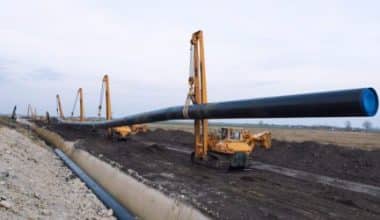Your home is more than just a place to live, it’s an investment. To protect it, you need to understand dwelling coverage, a fundamental component of your homeowners’ insurance. Dwelling coverage, sometimes called dwelling insurance, is a part of a standard homeowners insurance policy that covers the physical structure of your home if it’s damaged by a covered hazard. It is different from home insurance, which covers the surrounding land and detached buildings on the property around your home.
What Is Dwelling Coverage?
Dwelling coverage is a part of a home insurance policy that specifically covers the structure of your house. It helps cover the cost of repairing or rebuilding your home if it is damaged by certain hazards or perils, such as fire, windstorm, vandalism, or theft Dwelling coverage typically includes the foundation, frame, walls, roof, and other structures attached to the house, such as an attached garage or porch. It may also cover installed fixtures like cabinets and counters, as well as permanently attached appliances connected to public utilities.
What Does Dwelling Coverage Not Cover?
While dwelling coverage protects your home’s structure, it does not cover everything.
The common exclusions are :
#1. Flood Damage
Dwelling coverage most of the time does not cover damage caused by floods. To protect against flood damage, you may need to purchase a separate flood insurance policy.
#2. Earthquake Damage
Dwelling coverage generally does not cover damage caused by earthquakes. If you live in an area prone to earthquakes, you may need to consider purchasing earthquake insurance.
#3. Sewer Backups
Damage caused by sewer backups is not covered by dwelling insurance. You may need to check your policy or speak with your insurance agent to understand the specific coverage in this regard.
#4. Detached Structures
While dwelling coverage typically covers structures attached to the house, such as an attached garage or porch, it may not cover detached structures like a detached garage, shed, above-ground pool, or fences.
#5. Wear and Tear
Dwelling coverage does not cover damage that occurs naturally over time due to wear and tear, deterioration, or lack of maintenance.
#6. Neglect or Intentional Damage
Damage resulting from neglect or intentional acts, such as intentional destruction of property, is generally not covered by dwelling insurance.
Dwelling coverage typically excludes damage caused by business-related activities conducted within the home. Separate business insurance may be required to cover such damage.
#8. Certain High-Value Items
Dwelling coverage may have limits on coverage for high-value items such as jewelry, art, or collectibles. Additional coverage, known as scheduled personal property coverage, may be necessary to fully protect these items.
Dwelling coverage excludes damage caused by business-related activities conducted within the home. Separate business insurance may be required to cover such damage.
#10. Certain High-Value Items
Dwelling coverage may have limits on coverage for high-value items such as jewelry, art, or collectibles. Additional coverage, known as scheduled personal property coverage, may be necessary to fully protect these items.
How Much Dwelling Coverage Do You Need?
The amount of dwelling coverage you need depends on factors such as the size and construction of your home, local building costs, and other factors. It’s recommended to work with your insurance agent to determine the appropriate amount of dwelling coverage for your specific situation.
How Much Dwelling Coverage Do I Need
Having sufficient dwelling coverage is crucial for a complete home reconstruction in case of total loss. Determining the appropriate amount of dwelling coverage you need for your home can depend on several factors.
Considerations To Help You Determine The Right Amount
#1. Rebuilding Cost
The primary purpose of dwelling coverage is to provide enough funds to rebuild your home in case of a total loss. You should aim to have enough coverage to completely rebuild your home from the ground up. This includes the cost of materials, labor, and any associated expenses.
#2. Replacement Value
The replacement value of your home is the estimated cost to rebuild it based on factors such as the size of your home, local building costs per square foot, and the price of construction materials and labor. Ensure that your dwelling coverage limit is equal to or close to the replacement value of your home.
#3. Local Building Codes
Consider any local building codes or regulations that may affect the cost of rebuilding your home. These codes may require certain upgrades or modifications that can impact the overall cost.
#4. Home Features and Upgrades
Take into account any unique features, upgrades, or customizations in your home that may increase the cost of rebuilding. This can include high-end finishes, custom-built structures, or specialized architectural elements.
#5. Square Footage
The size of your home, measured in square footage, is a significant factor in determining the rebuilding cost. Larger homes generally require more materials and labor, which can increase the overall cost.
#6. Home Value
The value of your home is a crucial factor in determining the amount of dwelling coverage you need. The higher the value of your home, the more coverage you will likely require to rebuild or repair it in case of damage or loss.
#7. Location
The location of your home can impact the cost of rebuilding. Factors such as local construction costs, labor expenses, and availability of materials can vary by region. Homes in areas with higher construction costs may require more dwelling coverage.
#8. Construction Materials
The type of materials used in the construction of your home can affect the cost of rebuilding. Homes made with high-end or specialized materials may require higher coverage limits.
#9. Personalized Features
If your home has unique or customized features, such as custom cabinetry, built-in appliances, or high-end finishes, you may need additional coverage to account for the cost of repairing or replacing these features.
#10. Extended Replacement Cost
Some insurance policies offer extended replacement cost coverage, which provides additional coverage beyond the policy limit to account for unexpected increases in construction costs. This can be beneficial in case the actual cost of rebuilding exceeds the estimated amount.
Home Insurance Dwelling Coverage
Dwelling coverage, also known as dwelling insurance, is a component of homeowners insurance that specifically covers the structure of your home. This helps pay for the repair or rebuilding of your house if it is damaged or destroyed by a covered peril, such as fire, windstorm, or vandalism. It is referred to as Coverage A in a home insurance policy. It includes the main structure of your home, including the walls, roof, foundation, and attached structures like garages or decks.
Various Kinds of Home Insurance Dwelling Coverage
Dwelling coverage in home insurance specifically covers the structure of your home.
The typical dwelling coverage includes:
#1. Main Structure
Dwelling coverage includes the main structure of your home, such as the walls, roof, foundation, and floors.
#2. Attached Structures
This covers attached structures like garages, decks, patios, and porches that are connected to your home.
#3. Built-in Appliances
Dwelling coverage typically includes coverage for built-in appliances like stoves, ovens, dishwashers, and built-in refrigerators.
#4. Accidental Water Damage
It may cover certain types of accidental water damage, such as damage caused by burst pipes, leaking appliances, or plumbing issues. However, damage caused by floods or sewer backups typically requires separate coverage.
#5. Permanently Attached Systems
Dwelling coverage often includes coverage for permanently attached systems like heating, ventilation, and air conditioning (HVAC) systems, electrical wiring, and plumbing.
#6. Repair or Rebuilding Costs
Dwelling coverage helps pay for the repair or rebuilding of your home if it is damaged or destroyed by covered perils, such as fire, windstorm, hail, vandalism, or theft.
#7. Structural Damage
Dwelling coverage covers structural damage to your home caused by covered perils. This can include damage to the walls, roof, foundation, ceilings, and floors.
#8. Vandalism and Theft
Dwelling coverage may cover damage or loss caused by vandalism or theft. This can include repairs to damaged structures and the replacement of stolen items.
#9. Heating and Cooling Systems
Dwelling coverage may cover the repair or replacement of your heating, ventilation, and air conditioning (HVAC) systems if they are damaged by a covered peril.
#10. Fire Damage
Dwelling coverage covers damage caused by fire, smoke, and explosions. This includes the repair or replacement of damaged structures, as well as the cost of removing debris and cleaning up after a fire.
Dwelling Coverage Estimate
When estimating dwelling coverage, there are a few methods you can use to determine the appropriate amount of coverage for your home.
Approaches Used To Determine Dwelling Coverage Estimate
#1. Square Footage And Local Building Costs
One method is to multiply the square footage of your home by the average local building costs per square foot. This can give you a rough estimate of the replacement cost of your home.
#2. Replacement Cost Appraisal
For a more accurate estimate, you can consider getting a special replacement cost appraisal of your home. This involves hiring a professional appraiser who will assess the cost of rebuilding your home based on its specific features and characteristics.
#3. Online Replacement Cost Calculator
Another option is to use an online replacement cost calculator provided by insurance companies or other reputable sources. These calculators typically ask you questions about your home, such as its size, construction materials, and features, to estimate the replacement cost.
#4. Consultation With Professionals
You can consult with professionals such as contractors, builders, or insurance agents who have access to replacement cost calculators or tools. They can provide guidance and help you determine the appropriate amount of dwelling coverage based on your specific circumstances.
#5. Extended Replacement Cost Coverage
Consider adding extended replacement cost coverage to your policy. This coverage provides additional funds beyond the dwelling coverage limit to account for unexpected increases in construction costs. It can provide an extra cushion in case the actual cost of rebuilding exceeds the estimated amount.
Importance of Dwelling Coverage Estimate
The importance of estimating dwelling coverage lies in ensuring that you have adequate insurance protection for your home.
#1. Rebuilding your Home
Dwelling coverage is designed to cover the cost of repairing or rebuilding your home in the event of a covered loss, such as fire, windstorm, or other disasters. Estimating the correct amount of dwelling coverage is crucial to ensure that you have enough coverage to rebuild your home to its pre-loss condition.
#2. Avoid Underinsurance
Underestimating the value of your home and having insufficient dwelling coverage can leave you financially vulnerable. In the event of a total loss, you may not receive enough insurance proceeds to fully rebuild your home. Estimating dwelling coverage accurately helps prevent underinsurance and ensures that you can recover from a significant loss.
#3. Meeting Lender Requirements
If you have a mortgage on your home, your lender may require you to carry a certain amount of dwelling coverage. Estimating the appropriate coverage amount helps you meet these requirements and maintain compliance with your mortgage agreement.
#4. Protecting your Investment
Your home is likely one of your most valuable assets. Estimating dwelling coverage properly helps protect your investment by providing the necessary funds to repair or rebuild your home in the event of covered damage or destruction.
#5. Avoiding Out-of-Pocket Expenses
Accurately estimating dwelling coverage helps ensure that you have sufficient coverage to rebuild your home without having to dip into your savings. Inadequate coverage could result in significant out-of-pocket expenses to cover the difference between the insurance payout and the actual cost of rebuilding.
#6. Protecting Against Inflation
The cost of construction materials and labor tends to increase over time due to inflation. Estimating dwelling coverage regularly helps account for inflation and ensures that your coverage keeps pace with the rising costs of rebuilding your home.
#7. Preserving your Equity
If you have built equity in your home, it is essential to protect that investment. Estimating dwelling coverage accurately helps safeguard your equity by ensuring that you can rebuild or repair your home without depleting your equity or facing financial strain.
#8. Mitigating Financial Risk
In the event of a significant loss, such as a fire or natural disaster, the financial burden of rebuilding your home can be overwhelming. Accurate dwelling coverage estimation minimizes the financial risk associated with rebuilding and helps provide a safety net to help you recover and rebuild your life.
#9. Compliance with Insurance Requirements
Insurance policies and regulations often require homeowners to carry sufficient dwelling coverage. By estimating coverage accurately, you can fulfill these requirements and maintain compliance with your insurance policy and local regulations.
#10. Assurance Against Unexpected Events
Accidents and disasters can occur unexpectedly. Having a proper dwelling coverage estimate gives you peace of mind, knowing that you are adequately protected in case of unforeseen circumstances.
What Is Coverage A in a Dwelling Policy?
Coverage A in a dwelling policy is the part of a homeowners insurance policy that covers the structure of your home. It protects the physical components of your home, such as walls, roof, and foundation. The purpose of Coverage A is to cover the cost of repairing or rebuilding your home if it is damaged or destroyed by covered perils. The coverage limit for Coverage A is based on the estimated replacement cost of your home. Nevertheless, Coverage A does not cover certain perils like flood or earthquake damage. Separate insurance policies may be needed for those risks.
What Is Loss Assessment Coverage?
Loss assessment coverage is an optional endorsement that can be added to a homeowners insurance or condo insurance policy. It protects individuals who live in shared communities, such as condos or homeowners associations (HOAs), where they are responsible for a portion of damage or loss in common areas. Loss assessment coverage helps cover the costs if the community’s master policy does not fully cover a claim or if there is no coverage by the association’s insurance for a specific loss. It can help prevent condo owners or homeowners from paying out-of-pocket for special assessment fees issued by the association due to an insurance claim.
What Is Water Backup Coverage?
Water backup coverage, also known as sewer and sump pump overflow coverage, is an optional endorsement that can be added to a homeowners insurance policy. It helps cover the cost of water damage caused by sewer backups or sump pump failures. This coverage is not included in basic home insurance policies, so it must be added separately. Water backup coverage may cover damage caused by sewer backups, sump pump failures, and other systems designed to remove water from the foundation of your home. It can help pay for repairs, replacement of damaged property, and removal of standing water.
What Is The Coverage Of A Building?
The coverage of a building is the portion of a property that is covered by the fully enclosed portion of all buildings larger than a certain size, typically 120 square feet or more. It is expressed as a percentage of the total lot area. Building coverage is an important factor in determining the size and height of a building that can be constructed on a particular property. It is often regulated by building codes and zoning ordinances to ensure the proper use of land and to prevent overcrowding.
What Is Basic Property Coverage?
Basic property coverage refers to a type of insurance coverage that protects against specific named perils or causes of loss. It covers a limited number of perils, such as fire, lightning, smoke, windstorm, hail, explosion, riot, civil commotion, aircraft or vehicle damage, glass breakage, vandalism, theft, and volcanic eruption. The coverage is based on a named peril policy, meaning that the perils must be specifically listed for coverage to apply.
Conclusion
Dwelling coverage is essential for home reconstruction in case of total loss. To estimate dwelling coverage, use square footage and local building costs, a replacement cost appraisal, an online calculator, consultation with professionals, or consider adding extended replacement cost coverage. Estimating dwelling coverage is crucial for ensuring adequate insurance protection for your home. It helps in rebuilding, avoiding underinsurance, meeting lender requirements, protecting your investment, and avoiding out-of-pocket expenses. Accurate estimates help maintain compliance with mortgage agreements, protect your investment, and avoid significant out-of-pocket expenses.
- DWELLING INSURANCE: How Much Dwelling Coverage You Need
- BEST HOMEOWNERS INSURANCE IN LOUISIANA FOR 2023
- RV INSURANCE COST: How Much Is RV Insurance? (2023)
- CONDO INSURANCE FLORIDA: How Does It Work?






